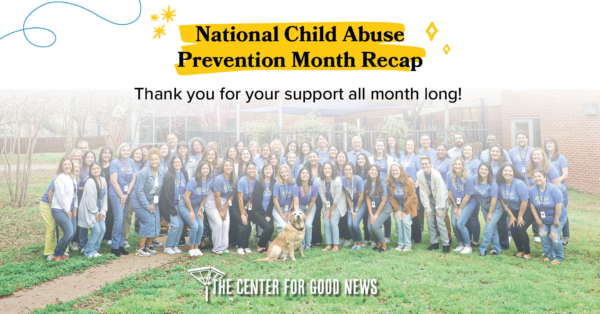Last year at the Center for Child Protection, 92% of children knew and trusted their abusers. This tells us that stranger danger isn’t the only tactic we should take when protecting our children. With this knowledge, what do we need to know to help protect the children in our lives?
One way an abuser may form a relationship with a child is through grooming. According to our partners at Darkness to Light, grooming is a process by which offenders gradually draw victims into a sexual relationship and maintain that relationship in secrecy. Offenders may even fill roles within the victims’ families making them trusted and valued friends. This tactic is highly successful because of its slow and gradual nature.
We asked Mollyanne Vasquez, Education Services Manager, what some signs are to look for in kids being groomed. She said the perpetrator may act through “inappropriate touching or tickling, innapropriate jokes or stories, gifts or preferential treatment, asking the child to keep a secret from others and creating one-on-one time.” It’s crucial to recognize the possible signs of someone you may trust with your children.
The 6 Stages of Grooming
01 Targeting the Child
- The offender typically has a preference to a gender, age or “type” of child and will pay special attention to him or her.
02 Gaining the Child’s and Caregiver’s Trust
- “I saw you playing with Legos. I’m planning to see the new movie, you can come with me if you want to go.”
03 Filling a Need
- “I know you love reading so I got you this book.”
04 Isolating the Child
- “You can trust me because no one understands you more than I do.”
- “Special” trips, one-on-one coaching, babysitting, etc.
05 Sexualizing the Relationship
- “Have you ever watched porn? I can show you what it is.”
- “Have you ever masturbated? I can show you how, it feels really good.”
06 Maintaining Control
- “If you tell anyone, something bad could happen to you and your family.”
- “If you tell anyone, we could both go to jail and wouldn’t be able to be together.”
Learning the stages of grooming is just one way to prevent it from happening.
In most cases, the parents are being groomed as well as the child, according to Vasquez. “Perpetrators know that in order to gain access to a child, they have to have the trust of the adults in that child’s life,” she said. “Perpetrators can groom adults by being the ‘go-to- person for any kind of support, like babysitting or mentoring. They can position themselves as an expert, leader or someone with inherent trust. These tactics allow the perpetrator to build trust with the child’s caregiver and gain time alone with the child.”
Parents or caregivers should also know red flags of what could be grooming behavior.
- Targeting specific kids for special attention, gifts or activities.
- Slowly isolating a kid from family members and friends – physically and emotionally.
- Undermining relationships with parents and friends to show that “no one understands you like I do.”
- Gradually pushing or crossing physical boundaries. This could range from long-lasting full-frontal hugs, sitting on laps or “accidental” touching of private areas.
- Offenders sometimes engage in partially clothed tickle sessions, showering with kids or sleeping in the same bed.
- Encouraging kids to keep secrets from their family members.
“It can be scary to know a perpetrator is most often known to the child and trusted by the family, but we have to understand this as well as the grooming process if we want to prevent child sexual abuse,” Vasquez said. “It does not mean we can’t trust the people in our lives; in fact, having conversations about these topics actually builds trust with children and protective family members.”
It’s never too early or too often to begin talking to your kids about their bodies, sex and boundaries. It’s important they know they can come to you at any time if someone makes them feel uncomfortable or unsafe, whether that person is a family member, friend or youth worker.
Contact Info
Center for Child Protection
8509 FM 969, Building 2
Austin, Texas 78724
Phone: 512-472-1164
Fax: 512-472-1167
Web: centerforchildprotection.org














